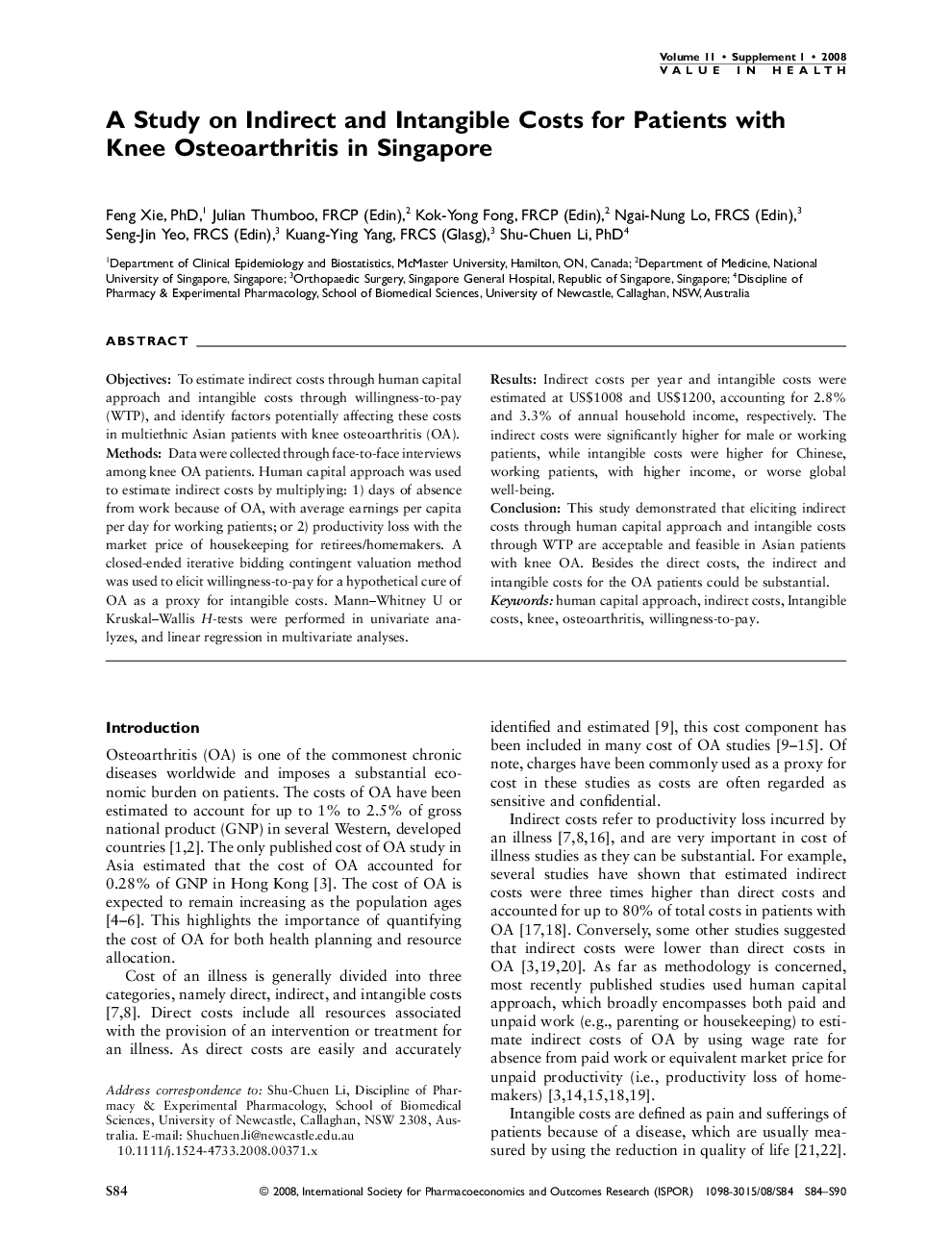| کد مقاله | کد نشریه | سال انتشار | مقاله انگلیسی | نسخه تمام متن |
|---|---|---|---|---|
| 991667 | 935625 | 2008 | 7 صفحه PDF | دانلود رایگان |

ObjectivesTo estimate indirect costs through human capital approach and intangible costs through willingness-to-pay (WTP), and identify factors potentially affecting these costs in multiethnic Asian patients with knee osteoarthritis (OA).MethodsData were collected through face-to-face interviews among knee OA patients. Human capital approach was used to estimate indirect costs by multiplying: 1) days of absence from work because of OA, with average earnings per capita per day for working patients; or 2) productivity loss with the market price of housekeeping for retirees/homemakers. A closed-ended iterative bidding contingent valuation method was used to elicit willingness-to-pay for a hypothetical cure of OA as a proxy for intangible costs. Mann–Whitney U or Kruskal–Wallis H-tests were performed in univariate analyzes, and linear regression in multivariate analyses.ResultsIndirect costs per year and intangible costs were estimated at US$1008 and US$1200, accounting for 2.8% and 3.3% of annual household income, respectively. The indirect costs were significantly higher for male or working patients, while intangible costs were higher for Chinese, working patients, with higher income, or worse global well-being.ConclusionThis study demonstrated that eliciting indirect costs through human capital approach and intangible costs through WTP are acceptable and feasible in Asian patients with knee OA. Besides the direct costs, the indirect and intangible costs for the OA patients could be substantial.
Journal: Value in Health - Volume 11, Supplement 1, March–April 2008, Pages S84-S90